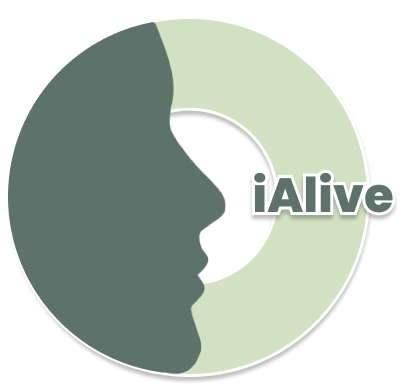Transcript
Module 1: Introduction To Suicide Prevention
Together for Suicide Prevention
1. Suicide is primarily a social issue, making its prevention a shared responsibility of society and all its members. This includes professionals from healthcare, education, law enforcement, as well as individuals in their everyday roles. Every person’s contribution matters. However, the possibilities for prevention depend on our specific roles within society. In this section, we’ll explore how these roles work together to create an effective approach to suicide prevention.
2. Society consists of individuals with varying levels of risk for suicidal behavior. While most people are at low risk, some face a significantly higher likelihood of suicide. To address these differences effectively, tailored approaches are necessary. Preventive measures vary in intensity, with individuals at higher risk requiring more focused and intensive support compared to those at lower risk. Recognizing these differences helps ensure that everyone receives the level of care and intervention they need.
3. The pyramid of intervention illustrates how different sectors address individuals at various stages of risk. As we move toward the top of the pyramid, the number of individuals needing support decreases, but their risk of suicide or vulnerability increases, necessitating more targeted and intensive measures. In the following minutes, we will briefly explore the roles that various sectors and societal representatives play in suicide prevention. It is important to note that effective prevention starts well before any potential problems arise, through activities designed to promote mental health and well-being across all levels of society.
4. Suicide prevention is a collective effort, and each of us can play a role. You don’t need to be a doctor, clinician, or therapist to offer basic support to someone in distress. What matters most is recognizing when someone is experiencing serious distress and providing compassionate assistance until they can connect with professional help. For more guidance on identifying individuals in distress and offering effective support, refer to the Modules 2 and 3.
5. Suicide prevention extends beyond the healthcare sector, with contributions from various other fields, including the media, social welfare centers, education, police, and firefighters. Each of these actors plays a unique and vital role in creating a supportive and proactive system of prevention. For example, the media significantly influence suicide prevention through their reporting. How stories about suicide are framed can shape public attitudes, perceptions of mental health, and willingness to seek help. Responsible and sensitive reporting is crucial in fostering understanding and reducing stigma. Training school staff and employees in other sectors can also play a key role in strengthening mental health initiatives. These individuals often interact with large numbers of people, giving them valuable opportunities to identify those at risk of suicide early. Because of their frontline roles, they are often referred to as “gatekeepers” of the system. With proper training and awareness, gatekeepers can recognize signs of vulnerability, intervene effectively, and facilitate timely referrals to appropriate support services. This makes them an essential part of an integrated approach to suicide prevention.
6. Non-governmental organizations (NGOs) dedicated to mental health play a vital role in suicide prevention. They contribute both to strengthening overall mental health and serving as key gatekeepers within the system. NGO employees often interact closely with individuals and communities, enabling them to recognize signs of suicidal vulnerability early and provide timely support. Equally important in suicide prevention are individuals who have experienced suicidal behavior and those close to them. Each suicide profoundly impacts approximately 135 people, including family members, friends, and others indirectly exposed, such as police officers, doctors, or neighbors. By listening to the experiences and needs of those affected, we can design more effective and compassionate prevention measures that address the realities of those directly and indirectly touched by suicide.
7. Each of us has a role to play in suicide prevention by offering support, understanding, and information about available resources. However, when someone is experiencing severe distress, seeking professional healthcare assistance becomes essential. Personal physicians are often the first point of contact and serve as crucial gatekeepers within the healthcare system. They interact with a wide range of individuals and can identify those in need of specialized care. When necessary, they can refer individuals to mental health professionals such as psychiatrists, clinical psychologists, suicidologists, or other specialists who are trained to provide targeted treatment and appropriate support for those at risk of suicide. Together, these efforts form a supportive network, ensuring that individuals in distress receive the care and help they need.
8. Now that you’ve learned about suicidal behavior and its prevention, continue the educational program with Module 2, where you will explore the factors influencing an individual’s risk of suicide and how these risks may present.
Watching from China? Try

